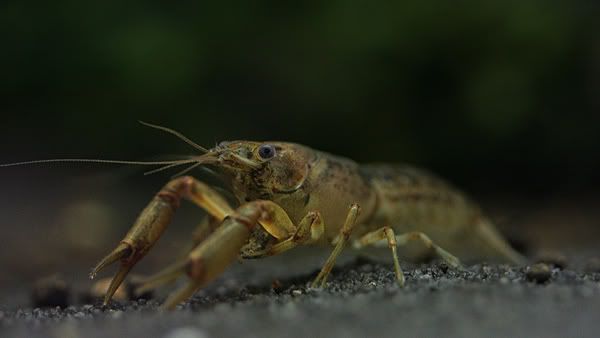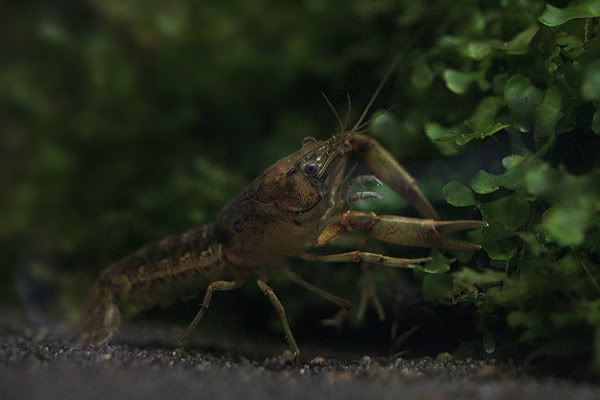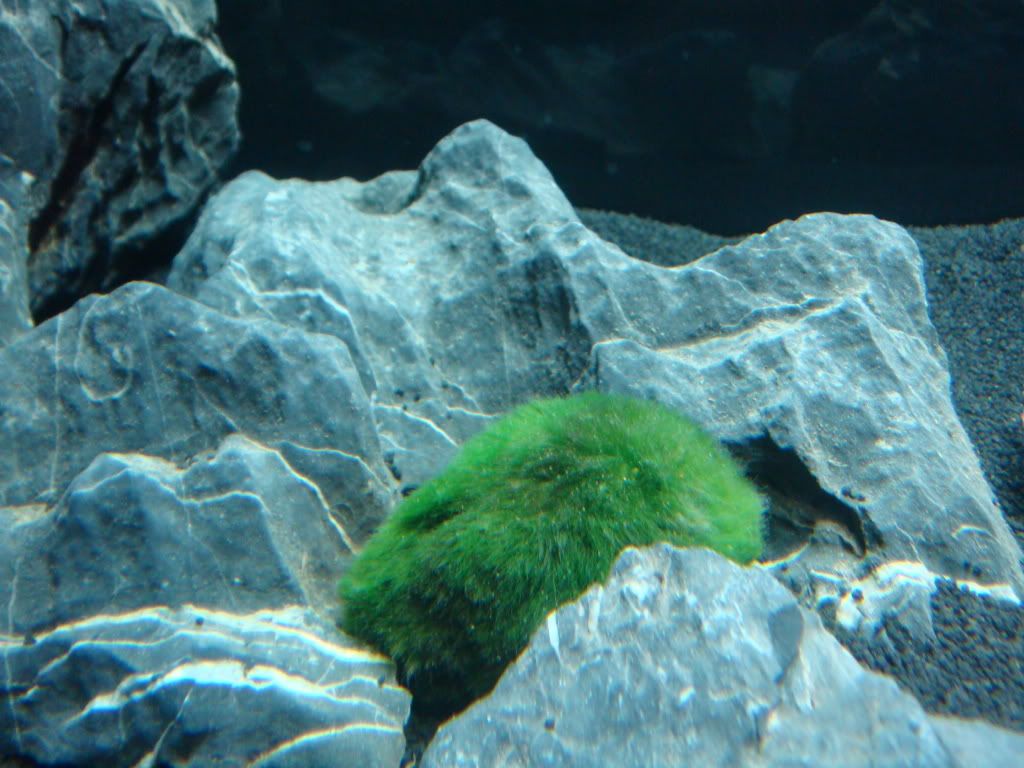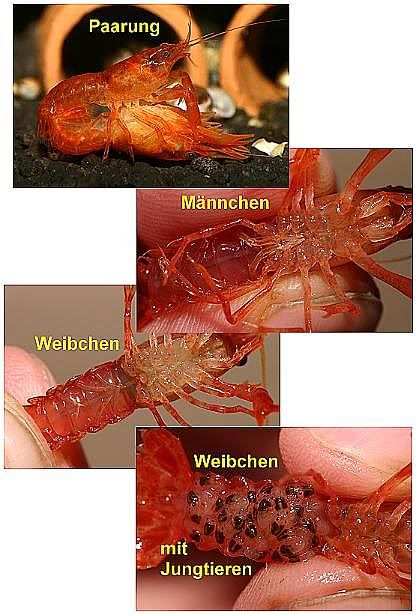Hi,
here's a video showing 2 of my cpo's having sex!!
Monday, October 4, 2010
Friday, September 17, 2010
Cambarellus sp. Patzcuarensis & Cambarellus sp. Schoko Video!!
Hi all!!
I finally got my dwarf crays from Germany this week. Everyone was safe and doing well!!
Here's a video i shot yesterday with a funny Cpo bully trying to catch a school of neon tetras (paracheirodon innesi) and a Cambarellus sp. Schoko taking a rest on a Seiryu stone.
Enjoy!!
Thursday, September 2, 2010
Cambarellus sp. schoko video
An HQ video showing a berried (pregnant) cambarellus patzcuarensis sp. Schoko.
Enjoy!!
Tuesday, August 31, 2010
Cambarellus sp. schoko
This is a new cambarellus patzcuarensis variety named "Schoko" due to its beautiful chocolate colouration.
I'm already waiting a pair of Cambarellus Patzcuarensis sp. Schoko from Germany next week, along with 3 pairs of Cpo's.
 |
| Cambarellus sp. Schoko |
 |
| Cambarellus sp. Schoko & Monosolenium Tenerum (Pellia) |
Cambarellus Patzcuarensis Dimorphism
2nd photo: Male
3rd photo: Female
4th photo: Female with eggs Leia Mais…
Wednesday, August 25, 2010
The advanced plant aquarium
An awesome video showing the steps needed to create a true masterpiece!!!
One of my personal favourites!!! Very helpful for those who would like to take the aquarium hobby one step further. The creation and maintenance of a full planted aquarium is one of the most challenging ventures one could face in the aquarium hobby.
Enjoy!!
Tuesday, August 24, 2010
Cambarellus Patzcuarensis Profile
Dwarf crayfish
| Orange dwarf crayfish (CPO) |
 Cambarellus patzcuarensis „orange“
Cambarellus patzcuarensis „orange“
The brown-coloured original of this colourful breed originates from the highlands of Mexico. Legend has it that the orange variety was first bred by a Dutchman to immortalise his country’s national colour.Temperature: 18-24 °C
pH: 7-8.5
KH: 6-12 °d
Aquarium size: At least 25 l
Monday, August 23, 2010
Iwagumi Styles
If you trace Iwagumi layouts to their origin, you will find a layout that Takashi Amano created approximately 30 years ago. It was a simple layout created by arranging river rocks and planting solely with Echinodorus tenellus. According to Takashi Amano, while some people did not seem to be surprised very much by the layouts that he had created through trials and errors up to that point, when they saw this Iwagumi layout, they seemed truly amazed by its unique and unusual beauty. Iwagumi layout style did not exist back then, and no one, including Mr. Mitsuo Yamazaki, the importer of E. tenellus, had any detailed information on the plant. It was truly an original creation by Amano that no one had seen before. Ever since that time, various styles of Iwagumi layouts were introduced by Amano and the allure and fascination with Iwagumi layouts has increased.
The establishment of Nature Aquarium was also the birth of the Iwagumi layout. Iwagumi layouts can largely be divided into a few styles.

Style I
This is a layout that was created with petrified wood, a piece that is not used much anymore due to its propensity to increase water hardness, to produce an impression of a highland. This Iwagumi layout, which was planted solely with Glossostigma, made a big splash when published in 1991.
* The number below each photograph denotes the year the photograph was published.
Style II
This is the Sanzon Iwagumi style that forms the foundation of Iwagumi. The marked presence of an Oyaishi (main rock) dominates the overall impression of the layout. The role of each rock is clearly defined in the composition as in Oyaishi, Fukuseki (secondary rock), and Soeishi (supporting rock). Rocks with a massive appearance, such as Hakkaiseki, are especially suited for this style.
Style III
This is an Iwagumi style in which slender rocks are arranged in a radial pattern. Since rocks are arranged pointing upward and spreading outward, the shape of their tips is especially important. Rocks are arranged with careful attention to their angles and the balance with other rocks.
Style IV
Unlike in other Iwagumi styles, rocks are arranged in the image of a reef or bedrock instead of standing upright. Expansive scenery with parts of an immense monolith exposed out of ground is easy to express in a horizontally long aquarium. A school of small slender fish gives emphasis further on the vastness of the scenery.
Style V
While the composition of this Iwagumi style follows the Sanzon Iwagumi pattern of the style II, a different atmosphere is created with the use of cosmetic sand. Cosmetic sand can brighten up an aquascape or add a sense of depth, depending on the way it is laid. It also conjures up an image of Kare Sansui (Japanese dry garden style) built with white sand and rocks.
Style VI
This is considered a separate Iwagumi style with a new twist in expression, although it still follows the basic compositional pattern. Layouts in this style are created with masterful rock arranging skill, such as a composition with a pair of main rocks or another with a novel rock arrangement using Ryuoseki.
Source: aquajournal.net Leia Mais…
An Introductory Guide to Iwagumi
For someone who wants to try an Iwagumi layout for the first time
Each rock used in Iwagumi has its own name. There are special rules of Iwagumi, such as the way its substrate is laid and the order of rock placement. This section discusses the basics of Iwagumi that every beginner should know.The names and functions of rocks

Oyaishi
This is the primary rock in Iwagumi. It is the largest rock as well. Select the best one in terms of shape and character. Its height should be approximately 2/3 of the height of an aquarium.
Fukuishi
This is the second largest rock and is placed on either left or right side of the Oyaishi. Select a rock with the same or similar texture as Oyaishi to give uniformity to the overall Iwagumi.
Soeishi
It is smaller than Fukuseki and is placed next to the Oyaishi, along with the Fukuseki. It plays a key role in the flow that the Oyaishi creates by bolstering the presence of the Oyaishi or accentuating the strength of Oyaishi.
Suteishi (a sacrificial stone)
It is a small rock that does not stand out in the overall arrangement of Iwagumi, and it may even become hidden by aquatic plants occasionally. Its presence has a subtle, simple elegance.
What is Sanzon Iwagumi?
 It is the most basic composition of Iwagumi in which the largest rock is placed in the center and a smaller Fukuseki and Soeishi are placed to the left and right of the Oyaishi. This type of composition is called Sanzon Iwagumi due to the resemblance of the rock arrangement to Buddhist triads.
It is the most basic composition of Iwagumi in which the largest rock is placed in the center and a smaller Fukuseki and Soeishi are placed to the left and right of the Oyaishi. This type of composition is called Sanzon Iwagumi due to the resemblance of the rock arrangement to Buddhist triads.Should the number of rocks be seven, five, or three?
 It is considered good to have an odd number for the rocks that play the major parts in scenery. An even number of rocks tends to look symmetrical or makes scenery appear split. Iwagumi looks more attractive if the center of the balance is somewhat shifted to one side or the other.
It is considered good to have an odd number for the rocks that play the major parts in scenery. An even number of rocks tends to look symmetrical or makes scenery appear split. Iwagumi looks more attractive if the center of the balance is somewhat shifted to one side or the other.A: An even number of rocks tend to split evenly.
B: Having an odd number of rocks prevents the even split.
Why is the Oyaishi tilted?
 While Sanzon Iwagumi in Japanese gardens, such as those in the dry garden style, often appears upright, the Oyaishi in Nature Aquarium is placed in an angle to express the flow of water by appearing to bear the force of the water.
While Sanzon Iwagumi in Japanese gardens, such as those in the dry garden style, often appears upright, the Oyaishi in Nature Aquarium is placed in an angle to express the flow of water by appearing to bear the force of the water.Iwagumi Layout Procedure

Lay a thin, even layer of the substrate.
Although the thickness of the substrate for a layout with driftwood is kept low in the front of an aquarium and increases gradually toward the back, the substrate for an Iwagumi layout is laid thin and evenly initially. This is different from the way the substrate is laid in other layouts.

Arrange Oyaishi according to the golden ratio.
It is the cardinal rule to start an arrangement by placing the Oyaishi first. An attractive and well-balanced Iwagumi can be created by placing the Oyaishi following the golden ratio of 1:1.618 (roughly 2:3).

Arrange the remaining rocks from the largest to the smallest in descending order of size.
Following the placement of Oyaishi, remaining rocks are placed in descending order of size: Fukuseki first, then Soeishi, and Suteishi last. The positions of rocks are decided by watching the balance of the angles and orientations of the rocks.

Finish the substrate by mounding soil.
Mound soil by spreading additional Aqua Soil over the existing substrate using a small plastic container. Let some Aqua Soil flow in between rocks to produce a sense of continuity. Finish the substrate by spreading powder type Aqua Soil over the mounded soil.
A key point for planting
 Since aquatic plants can soften the strength of rocks, aquatic plants are used to create a balance in the strength among the rocks. Low-growing plants are used to accentuate the details of a rock arrangement. Planting aquatic plants next to or in-between rocks is key for enhancing the natural feel of the layout.
Since aquatic plants can soften the strength of rocks, aquatic plants are used to create a balance in the strength among the rocks. Low-growing plants are used to accentuate the details of a rock arrangement. Planting aquatic plants next to or in-between rocks is key for enhancing the natural feel of the layout.Source: aquajournal.net Leia Mais…
Sunday, August 22, 2010
Green & Grey
Some photos i shot earlier showing some parts of my aquarium with Cladophora aegagropila and some Seiryu stones.
 |
| Cladophora Aegagropila and Seiryu Stone. |
 |
| Cladophora Aegagropila and Seiryu Stone. |
Thursday, August 19, 2010
A few words - Intro
Hi,
This is a blog about my love for Aquariums and Natural life in general.
I'll be posting my own videos shortly, so be patient!!!






